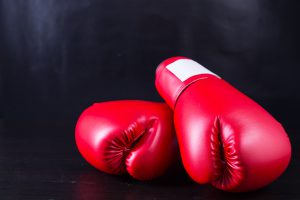
According to Merriam-Webster, biofilm is defined as a thin usually resistant layer of microorganisms (such as bacteria) that form on and coat various surfaces. Environmental biofilms are found on the mountain stream rock beds, the dog’s water bowl, etc.. Oral biofilms are the slimy layer on retainers and night guards. They are present in the sulcus and depending on the composition of the biofilm can be very pathogenic. Biofilms are constantly responding to their environment and evolving.
Oral biofilms can be resistant to brushing, flossing, rinsing, antibiotics and hand scaling. As dental hygienists, we are the only health care professional who have the ability to touch, feel and observe biofilms in the human body non-invasively. We are the first line of defense to battling oral biofilms. Continue reading to better understand our opponent.
What does oral biofilm look like? Your answer may be plaque and you would be right. However, plaque is not the only answer. Have you noticed the different consistencies of blood while with patients? This may be due to the biofilm present. For example, think about what blood looks like when we cut ourselves shaving; it’s clean, watery and drips. Now think of your periodontal patients; some have thick, milk-like blood and it doesn’t drip. The biofilm is mixing with the blood and that is how we are able to visualize it.
What does oral biofilm feel like? Slimy. Imagine taking a kitchen knife through olive oil versus water. It would feel different. So this resistance is the biofilm within the blood. These biofilms are living on the root or in the pocket and have been living quietly within the epithelial tissues too.
The best way is to fully understand the composition of your biofilm, is to perform a MyPerioPath®. In most cases, it will contain significant periodontal pathogens however there will be exceptions. When these exceptions appear, a different approach to therapy will be needed. This may be best explained in another blog. Back to the pathogenic biofilm…
In the definition of biofilm it states “resistant layer of microorganisms.” From my research, biofilm cannot withstand the energy created from ultrasonics, lasers and air polishers, so in my opinion biofilm hates energy. When you stay in a pocket for an extended period of time, at least more than 30 seconds you watch the blood get “cleaner and cleaner” and sometimes it just stops. Meaning it’s like a pimple, nothing else is coming out of that pocket, and we are done. Intuitively you move on to the next tooth or pimple. You might not have realized it but you just fully disrupted the biofilm with energy.
Biofilm is our opponent and the oral health care professional is the first line of defense. The best plan of attack is to fully understand the composition using MyPerioPath®, look and feel, then retest using MyPerioProgress to conquer or at least better control the biofilm.
For more information on how to become an OralDNA Provider – scan HERE: 
- Class II Periodontitis and Mouth Breathing - December 20, 2019
- Knowing Your Opponent-Biofilm - February 2, 2018
